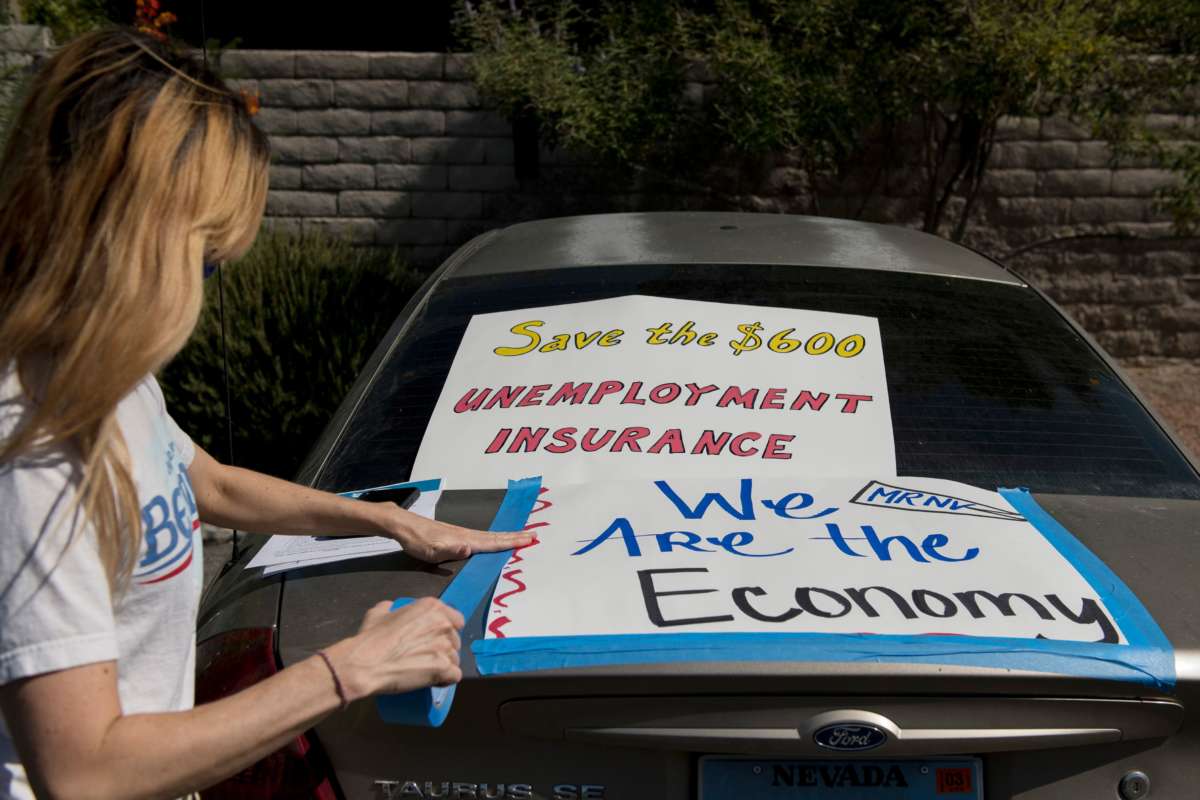On top of serious questions about the directive’s legality and workability, experts are warning that President Donald Trump’s executive action to extend the federal unemployment insurance boost at $400 per week — using $44 billion in funds meant for disaster relief — leaves out the poorest Americans by design.
The language of Trump’s unemployment memorandum issued over the weekend defines “eligible claimants” as those receiving “at least $100 per week” in state unemployment benefits — meaning that laid-off workers currently receiving less than $100 per week in aid will not see a dollar in federal relief unless states agree to increase their benefits.
As the Washington Post reported late Sunday:
Even if state governments sign onto the program, the jobless benefits might be out of reach for Americans in greatest need: Only out-of-work Americans receiving more than $100 a week in state unemployment insurance are eligible for the federal aid.
That means those at the bottom of the income distribution — particularly workers who rely on tips and the self-employed — could see no additional federal benefit at all, said Andy Stettner, an unemployment insurance expert at the Century Foundation.
The Post Jeff Stein noted that one estimate suggests Trump’s unilateral unemployment insurance boost “will block payments from going to 10-15% [of the] lowest-earning UI recipients.”
Jason Bailey, executive director of the Kentucky Center for Economic Policy, tweeted that “this plan is asking laid-off [Kentucky] workers to somehow live on as little as $39 a week.”
Trump’s directive calls for a $400-per-week boost — a significant cut to the previous $600 level — to what out-of-work Americans are receiving in state unemployment benefits. But, as analysts hastened to point out, Trump’s plan would require states to kick in 25% — $100 — of the $400 total, a difficult task for states reeling from massive budget shortfalls and administrative deficiencies.
“It’s a difficult proposition for states to implement in a short period of time,” Stettner told USA Today. “States had already struggled to get unemployment money in the hands of out-of-work Americans. This will disappoint workers. They think they’ll get that $400 next week, but they’re not.”
Literally every new detail about these executive orders confirms that in addition to being wildly unconstitutional they will do absolutely nothing to help anyone who’s suffering.
This is what happens when the President cares about posturing for an election but not about people. https://t.co/o0xWXvhwZE
— Leah Greenberg (@Leahgreenb) August 9, 2020
In a statement on Saturday, National Employment Law Project executive director Rebecca Dixon said “states that have the most sophisticated systems may be able to stand up this program eventually, but those states that have been faltering due to decades of neglect or outright sabotage will be less likely to see any of this money.”
“This is not a serious approach to solving a very serious problem,” Dixon said of the president’s executive action. “We urge the administration to get back to real negotiations with Congress on a comprehensive and operable approach that will ensure people have the resources they need to survive for the duration of this crisis.”
Join us in defending the truth before it’s too late
The future of independent journalism is uncertain, and the consequences of losing it are too grave to ignore. To ensure Truthout remains safe, strong, and free, we need to raise $46,000 in the next 7 days. Every dollar raised goes directly toward the costs of producing news you can trust.
Please give what you can — because by supporting us with a tax-deductible donation, you’re not just preserving a source of news, you’re helping to safeguard what’s left of our democracy.
